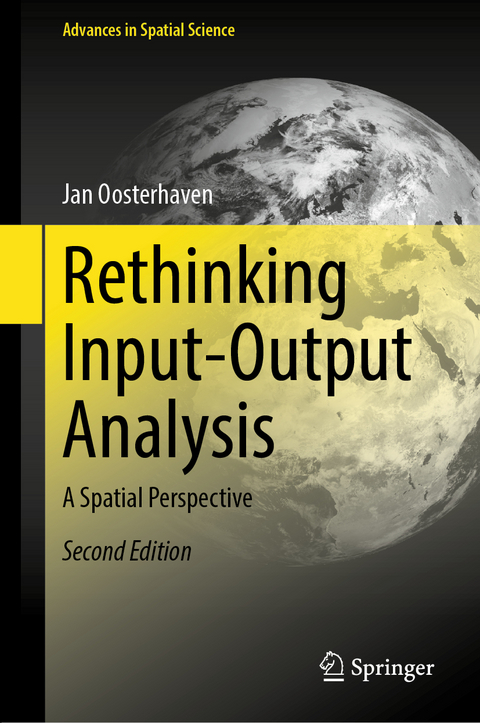
Rethinking Input-Output Analysis
Springer International Publishing (Verlag)
978-3-031-05086-2 (ISBN)
This textbook helps students to understand the social, economic, and environmental importance of the mutual relations between industries in the same and in different regions and nations and demonstrates how to model these relations using regional, interregional, and international input-output (IO) models. It enables readers to extend these basic IO models with endogenous household expenditures, to employ supply-use tables (SUTs) that explicitly distinguish the products used and sold by industry, and to use social accounting matrices (SAMs) that detail the generation, redistribution and spending of income. In addition to the standard demand-driven IO quantity model and its accompanying cost-push IO price model, the book also discusses the economic assumptions and usefulness of the supply-driven IO quantity model and its accompanying revenue-pull IO price model. The final chapters highlight three main applications of the IO model: (1) economic impact analysis of negative supply shocksas caused by, for example, natural disasters, (2) linkages, key sector, and cluster analysis, (3) structural decomposition analysis, especially of regional, interregional, and international growth, and demonstrate the strengths and weaknesses of these IO applications.
Written for graduate students of regional and spatial science as well as for economists and planners, this book provides a better understanding of the foundations, the power, the applicability and the limitations of input-output analysis. The second, completely revised edition expands on updating IO tables, modelling the disaster reconstruction phase, and includes an appendix on the necessary matrix algebra.
Jan Oosterhaven is Professor Emeritus of Economics at the University of Groningen (The Netherlands). His research focuses on interregional input-output analysis, indirect effects of supply shocks, and integral cost-benefit analyses of all kind of spatial and infrastructure measures. He was Editor of Economic Systems Research (1994-1998), President and Vice-President of the International Input-Output Association (2001-2009), and won the European Regional Science Prize in 2015.
Chapter 1. Introduction: Importance Interindustry Relations and Overview.- Chapter 2. Basic, Demand-Driven IO Quantity Models.- Chapter 3. Updating Different Types of IO Tables.- Chapter 4. From Regional IO Tables to Interregional SU Models.- Chapter 5. From Basic IO and SU Models to Demo-Economic Models.- Chapter 6. Cost-Push IO Price Models and Interaction with Quantities.- Chapter 7. Supply-Driven IO Quantity Model and its Dual, Price Model.- Chapter 8. Negative IO Supply Shock Analyses: When Substitution Matters.- Chapter 9. Other IO Applications with Complications.- Chapter 10. The Future of IO: What to Forget, to Maintain and to Extend.
| Erscheinungsdatum | 22.06.2022 |
|---|---|
| Reihe/Serie | Advances in Spatial Science |
| Zusatzinfo | XV, 155 p. 16 illus. |
| Verlagsort | Cham |
| Sprache | englisch |
| Maße | 155 x 235 mm |
| Gewicht | 430 g |
| Themenwelt | Naturwissenschaften ► Geowissenschaften ► Geografie / Kartografie |
| Wirtschaft ► Volkswirtschaftslehre ► Wirtschaftspolitik | |
| Schlagworte | Cost-push price model • Disaster impact analysis • Forward and backward linkages • Input-output analysis • Interregional spill-overs and feedbacks • Interregional trade • Key sector analysis • Leontief model • Structural decomposition analysis • Supply-driven input-output model |
| ISBN-10 | 3-031-05086-X / 303105086X |
| ISBN-13 | 978-3-031-05086-2 / 9783031050862 |
| Zustand | Neuware |
| Haben Sie eine Frage zum Produkt? |
aus dem Bereich


